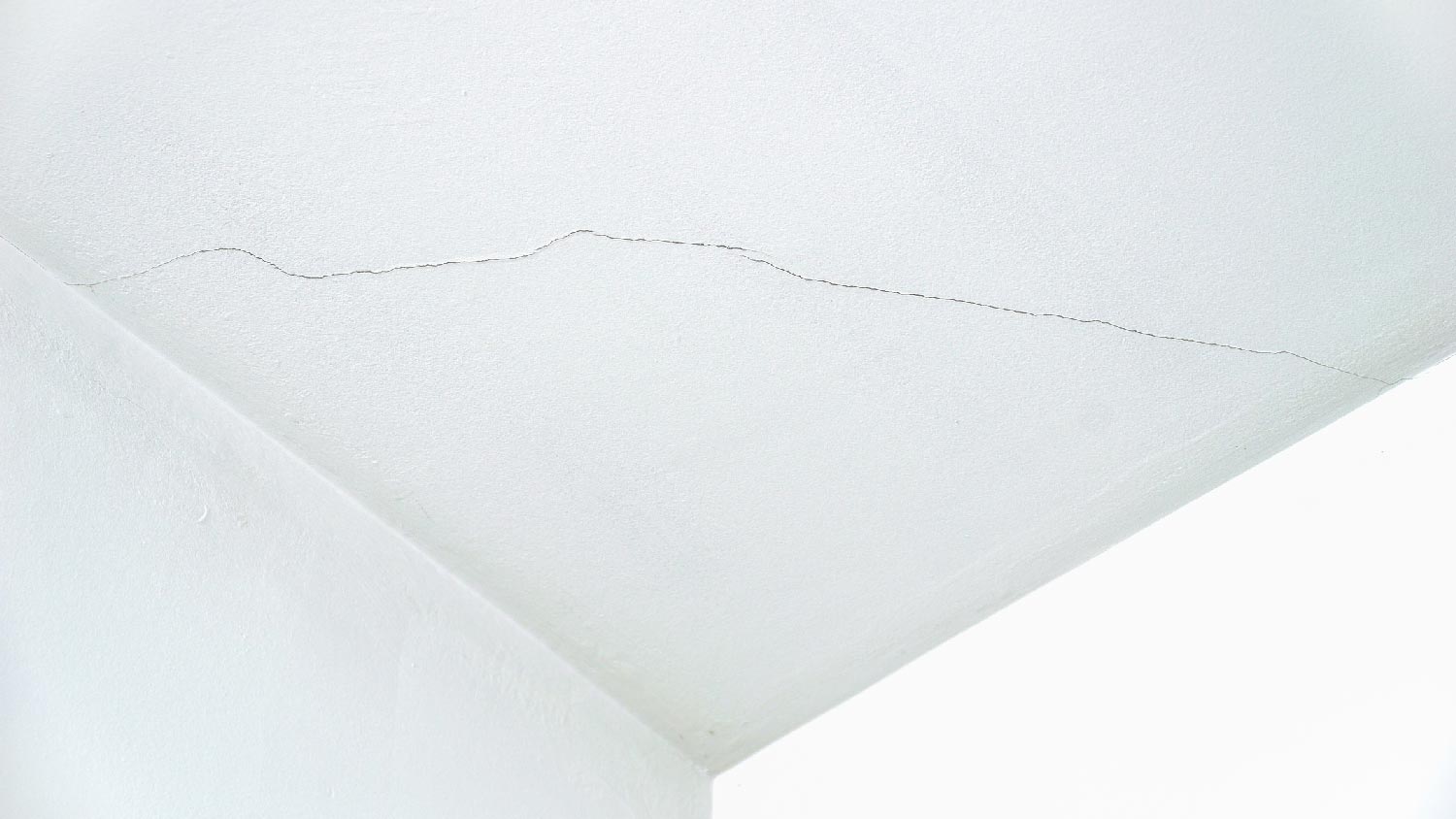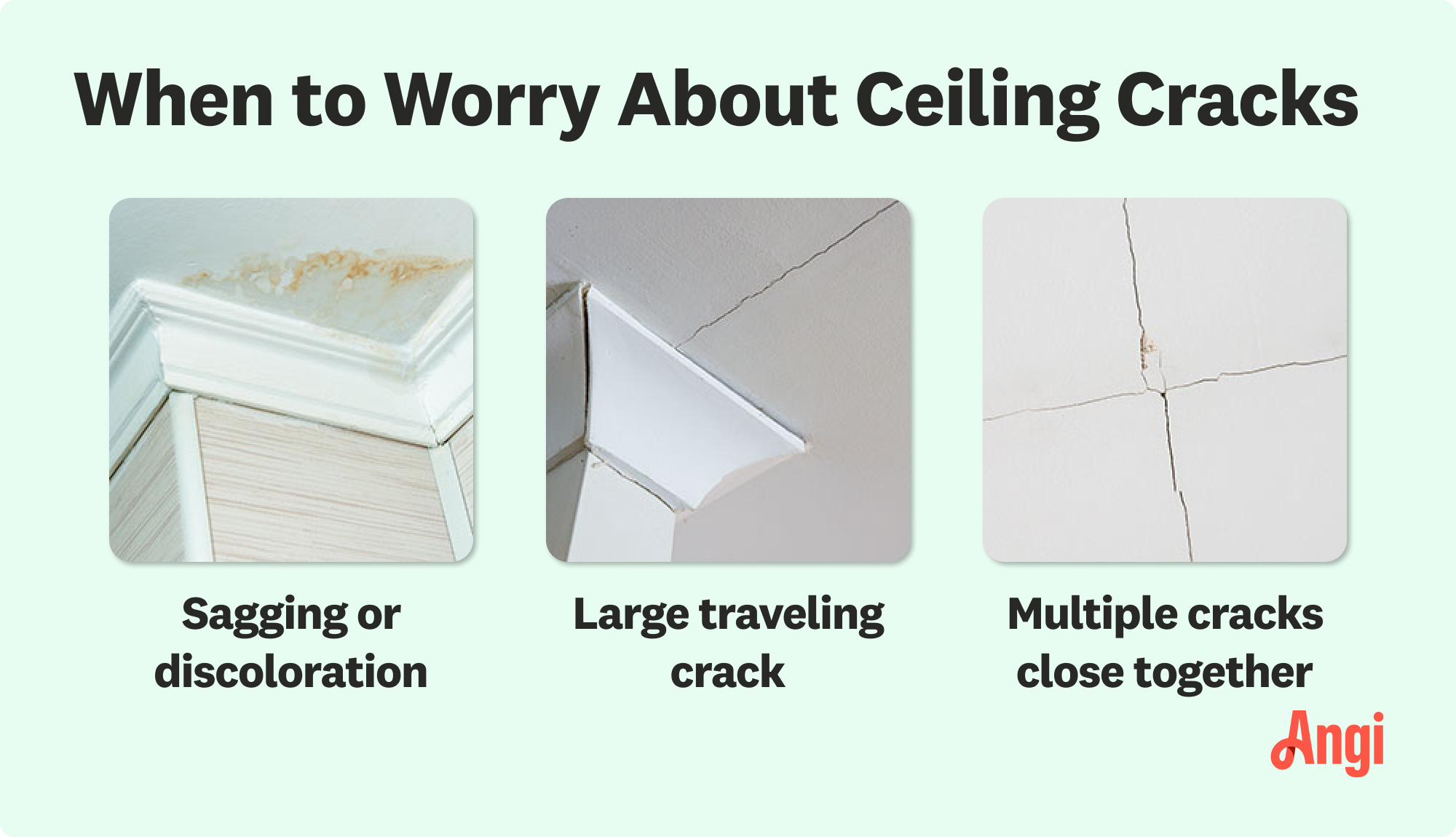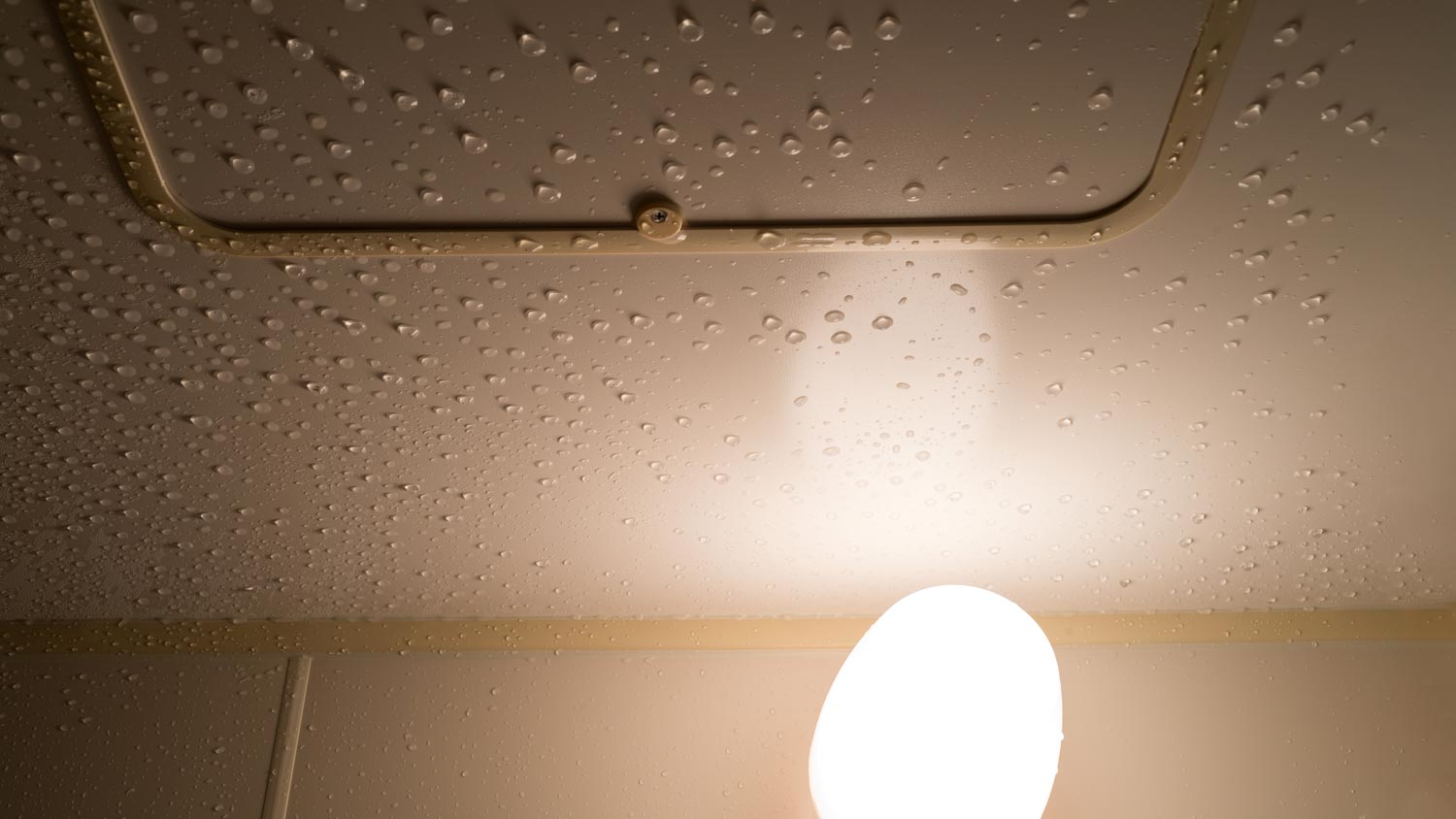
Drop ceilings are an affordable way to finish your room while maintaining access to utilities. Use this drop ceiling cost guide to estimate your project total.
Take a crack at diagnosing your ceiling damage


Ceiling cracks may appear as your home ages, simply due to shifting over time.
Larger cracks can indicate structural issues, like a problem with your foundation.
When sagging and discoloration accompany a ceiling crack, that usually means water damage.
Other causes of ceiling cracks include roof truss uplift, a heavy floor, and recurring vibrations.
No house stays perfect forever. Over time, houses take on minor cosmetic damage, but issues with the foundation, sudden water damage, poor construction, and other changes over time may lead to more serious problems, including large cracks in your ceiling.
Below, we’ll cover what causes ceiling cracks—and when it’s a serious concern.
Getting older isn’t all it’s cracked up to be. One of the most common causes of ceiling cracks is simply an aging house. Over time, things naturally move and shift, and your foundation naturally settles.
Most cracks related to general wear and tear are small, hairline cracks. Though cracks caused by aging are to be expected, they can still be cause for concern if the cracks are large or growing at an alarming rate. You can hire a local structural engineer to do a thorough inspection if you’re not sure when to worry about ceiling cracks.

Mild foundation settling is not cause for concern, but large ceiling cracks can be one of the early warning signs of foundation issues. Foundation problems can be serious and more expensive to fix the longer you wait; on average, foundation repair costs between $2,225 and $8,125.
Your roof’s trusses are theoretically designed to withstand the expansion and contraction that comes with changing temperatures. However, their flexibility only goes so far; in extreme temperatures (hot or cold) and humidity, your roof trusses could pull away, causing the ceiling drywall to split away from the walls.
A common sign of this issue is a drywall crack in the ceiling seam. You can start with a drywall repair contractor to take care of the cracks, but you may need to find a local roofer to resolve the larger issue.
Cracks that accompany a sagging ceiling may be a sign of water damage; discoloration is another common indicator. In this case, you may have a roof leak or leaking pipe. Depending on the cause, you may need to hire a roofer or a plumber in addition to your local ceiling repair contractor.
And if the water damage is severe, you’ll need to call in a local water damage restoration company, and maybe even a mold remediation company. Mold remediation costs between $1,225 and $3,750, depending on the severity of the problem.
It’s very possible that the cause of the ceiling crack is simply poor construction when the wall and ceiling were built. If the drywall contractor doesn’t properly tape the joints, for instance, the drywall may crack as the tape comes loose. You’ll need to find a local drywall contractor to make repairs.
If there’s another floor above your ceiling, it’s possible that it’s too heavy and doesn’t have the proper support. This is common in bathrooms with heavy fixtures, but it may also be a problem if you have heavy laundry appliances on the second floor or use your attic to store heavy items.

Believe it or not, recurring vibrations from heavy machinery or nearby traffic, particularly if you live on a busy road or near a highway, can lead to ceiling cracks over time.
Vibration is more likely to cause hairline cracks, rather than other, larger types of ceiling cracks. You don’t need to worry about these, but they’re easy to repair.
Larger cracks from heavy vibrations, like following an earthquake, should absolutely be repaired.
Minor ceiling cracks are nothing to worry about, but more prominent or sudden ceiling cracks could indicate a more pressing problem. Here’s when to worry about ceiling cracks:
If the ceiling is sagging or discolored: That’s a common indication of water damage.
If the crack is large and travels down the ceiling: This usually indicates a structural issue.
If there are a lot of ceiling cracks, and they showed up quickly: You may have a new structural problem in your home.

Nebo and his team completed job on time and within budget. Foundation repairs are finished very clean. They were changing some floor beams as well (as part of the project). They were always on time. Nice crew. Reasonable pricing and good warranty. I would recommend Nebo.
roof repair and gutter install
Repair completed competently
Barry and his team are fantastic. They understood our desire to undo the 1970s rehab on our 1920s rowhome and restore some of the original character. With painstaking attention to detail, Barry and co repaired some old woodwork, tore down 1970s-era radiator covers, constructed new built-in...
I contacted Damon to look at a number of historic windows in a property that I was selling that required repairs as noted on a home inspection report. After I explained the situation, and the need for a quick assessment, Damon immediately came out to the property, and gave me what I felt to...
They could have sent competent movers to the house. The moving team did not fulfill what was in the contract. They broke our items and one of them was an antique 4-post bed. They did refund me the cost of hiring the repair person. Nonetheless, I would rather have the whole piece of antique...
I called him to repair grout that was coming apart in my master bathroom. He said that he would be near my condo today and that he would call me when he was finished the job that he was coming into center city to do. He called, came over and looked at the tile in the bathroom and told me that...
From average costs to expert advice, get all the answers you need to get your job done.

Drop ceilings are an affordable way to finish your room while maintaining access to utilities. Use this drop ceiling cost guide to estimate your project total.

Popcorn ceiling removal costs depend on the size of your ceiling and any additional services like asbestos removal and resurfacing. Learn all the costs here.

Venetian plaster can add depth and texture to your aesthetic. Learn how much Venetian plaster costs based on factors like square footage and whether you hire a pro to help.

Learn how to find the root cause of condensation on your ceiling before moisture causes mold and other problems.

Ceiling height affects a home’s energy bill, aesthetic, and value. Whether you’re buying or building a house, here’s what to know about the height of the average ceiling.

Patching plaster walls involves steps that need to be followed closely. If you’re a handy DIYer, you can follow these steps to learn how to patch plaster walls yourself.